Bin designs have come a long way in recent years, focusing on functionality and aesthetics. Modern bins are designed to not only hold waste but also to minimize odours and prevent pests from getting in.
One popular design is the sensor bin, which opens automatically when it detects movement, allowing for hands-free use and reducing the risk of contamination. Composting is an eco-friendly activity that can be easily incorporated into our daily lives.
But choosing the right compost bin can be overwhelming with so many designs and sizes available in the market. We will explore the range of compost bin designs and sizes to help you make an informed decision based on your needs. We will also discuss the factors you should consider when selecting a compost bin, such as material, design, and size.
Additionally, we will delve into the importance of composting and how it benefits your garden and the environment. Lastly, we will provide tips on the maintenance and harvesting of your compost bin, along with Amazon’s best-selling compost bins and additional tools or accessories to aid in the process. So let’s begin our journey from mini to mega compost bins.
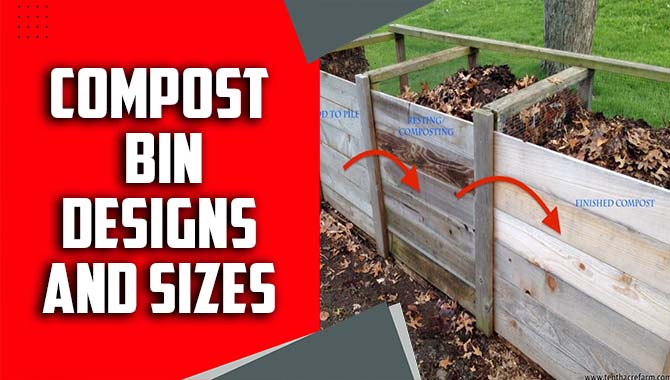
What Is The Best Material To Make A Compost Bin Out Of?
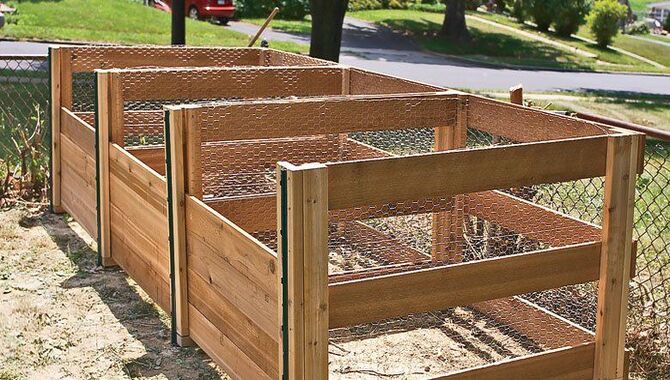
When it comes to making a compost bin, a variety of materials can be used. Some popular options include wood, plastic, and metal. Each material has its advantages and disadvantages, so choosing the one that best fits your needs is important.
For example, wooden compost bins are often more attractive and blend in well with outdoor spaces, but they may require more maintenance and can be prone to rotting if not properly treated. Plastic compost bins are lightweight and easy to move around, but they may not be as durable as other materials.
Metal compost bins are sturdy and long-lasting but can be heavy and rust over time. Ultimately, the best material for your compost bin will depend on your personal preferences and the specific needs of your composting setup.
A Comparative Measurement Of Compost Bin Designs And Sizes
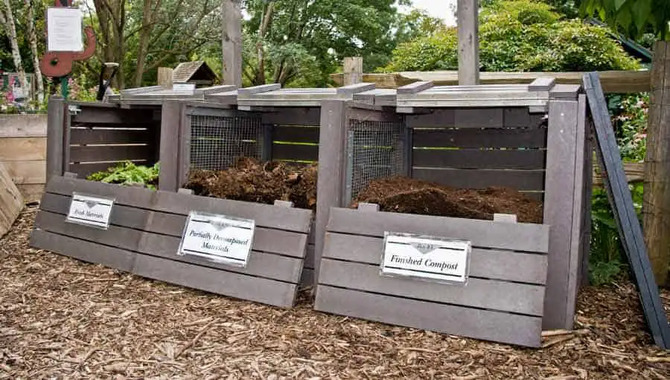
Regarding compost bin designs and sizes, there are various options. Some designs are more efficient than others, and the bin size will depend on the amount of waste you produce and the available space. A comparative measurement of compost bin designs and sizes can help you find the best option.
One important factor to consider is the airflow within the bin. Compost needs air to decompose properly, so bins with good ventilation systems will produce better results. Another important consideration is the material used to construct the bin. Plastic bins are lightweight and easy to move around but may not be as durable as metal or wooden bins.
In terms of size, larger bins are generally better for households that produce a lot of waste, while smaller bins may be sufficient for those who generate less. However, remember that a larger bin may take longer to fill up and decompose properly.
Ultimately, the best compost bin design and size for you will depend on your individual needs and preferences. By considering factors such as airflow, materials, and size, you can make an informed decision that will help you create nutrient-rich compost for your garden or plants.
Types Of Compost Bins
Composting is a great way to reduce waste while creating nutrient-rich soil for your garden. When selecting a compost bin design that fits your needs, consider the three main types: tumbling, stationary, and worm bins. Tumbling bins make aerating the compost easier, while stationary bins have a larger capacity for organic waste.
Worm bins use worms to break down materials quickly and efficiently for optimal decomposition. Factors such as space availability and durability should be considered when choosing a size and material for your compost bin. Open-air systems, tumblers, or worm composting might fit your needs based on the number of kitchen scraps or yard waste available for disposal. Be sure to look for features such as good airflow or easy access panels when selecting.
Factors To Consider When Selecting A Compost Bin
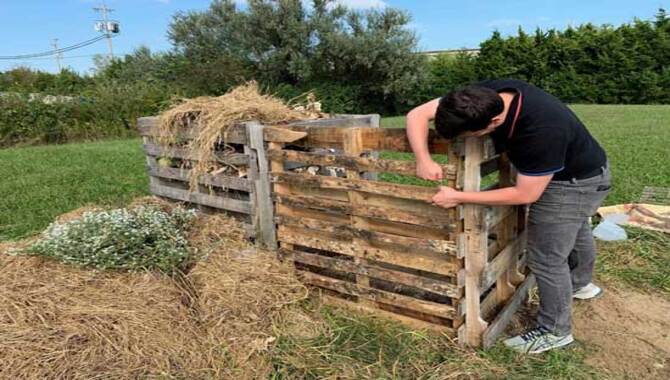
When selecting a compost bin, several factors must be considered to ensure you choose the best option for your needs. First, consider the bin size – it should be large enough to hold all of your compostable materials but not so large that it takes up too much space in your yard.
Second, consider the material of the bin itself – options include plastic, wood, and metal, each with its advantages and disadvantages. Third, think about the ventilation and drainage of the bin – proper airflow is essential for creating high-quality compost, and drainage holes will prevent excess moisture from building up.
Finally, consider any additional features that may be important to you. Such as a locking lid or ease of access for turning and removing compost. By considering these factors, you can select a compost bin that will help you create nutrient-rich compost for your garden while also fitting seamlessly into your outdoor space.
Design And Size Considerations
There are a few key factors to consider regarding design and size considerations. First and foremost, the design of a product should be intuitive and user-friendly, with clear instructions and easy-to-use features. It should also be aesthetically pleasing, with a cohesive visual style that reflects the brand’s values and identity.
Regarding size, products should be designed with user needs in mind. They should be large enough to accommodate all necessary features and functions but not so large that they become cumbersome or difficult to use. Additionally, the size of a product should be appropriate for its intended use case – for example.
A laptop on the go should be compact and lightweight, while a desktop computer can be larger and more robust. Ultimately, great design is about finding the perfect balance between form and function. By considering design and size considerations during development, companies can create visually appealing and highly functional products.
Compost Bin Design And Size Comparison
Regarding compost bins, there are various designs and sizes, depending on your needs. Some popular designs include tumblers, which are great for small spaces. Who don’t want to turn the compost manually; worm bins, which use worms to break down organic matter quickly and efficiently; and open-air bins.
Which allows for natural aeration and can accommodate larger amounts of waste. As far as size goes, smaller compost bins are better suited for those with limited outdoor space or who generate less waste, while larger ones are ideal for households with bigger gardens or yards. It’s important to choose a size that is appropriate for the amount of waste you generate.
On a regular basis so that your compost bin doesn’t overflow and become unmanageable. Ultimately, the design and size of your compost bin will depend on your individual needs and preferences. By considering factors such as space availability and waste output, you can find the perfect compost bin that will help you reduce waste and create nutrient-rich soil for your plants.
Importance Of Composting
Composting is a simple yet powerful way to reduce waste and create a more sustainable environment. Composting food scraps and yard waste can reduce the amount of organic matter in landfills, contributing to greenhouse gas emissions. Instead, composting allows these materials to be broken down into nutrient-rich soil that can be used to support plant growth.
But the benefits of composting go beyond just reducing waste. Composting also helps conserve water by improving soil structure and retaining moisture. It can even help reduce the need for chemical fertilizers and pesticides, as healthy soil can better resist pests and diseases.
Overall, composting is an easy and effective way for individuals and communities to impact the environment positively. By taking small steps like composting at home or supporting local composting programs, we can all contribute to a healthier planet for future generations.
The Effect Of Bin Size On Composting Time
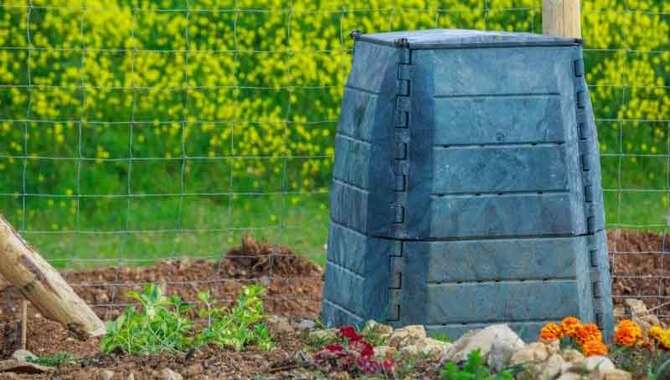
The size of the bin used for composting can significantly affect the time it takes for organic waste to break into nutrient-rich soil. A larger bin size can allow for greater airflow and moisture retention, speeding up decomposition.
However, if the bin is too large, it may be difficult to maintain the optimal temperature and moisture levels needed for efficient composting. On the other hand, smaller bins may not provide enough space for proper aeration and may take longer to break down waste.
Therefore, choosing a bin size that balances these factors and provides optimal conditions for composting is important. You can produce high-quality compost quickly by selecting the right bin size and regularly maintaining it with proper turning and moisture control.
Composting Techniques For Different Bin Designs And Sizes
Composting is an eco-friendly way to reduce waste and enrich soil for gardening. Different bin designs and sizes can affect the composting process, so it’s important to choose the right one for your needs. For small-scale composting, a countertop or under-the-sink bin is perfect for collecting food scraps and other organic matter.
These bins are typically made of plastic or metal and can be easily emptied into a larger outdoor composter. Larger outdoor composters come in various sizes and shapes, such as tumblers, wire mesh bins, or wooden bins. Tumblers are great for people with limited space, as they don’t require much room and are easy to turn. Wire mesh bins are budget-friendly and allow for plenty of airflows.
Wooden bins are sturdy and can hold large amounts of compost but may take longer to break down materials. No matter which bin you choose, following proper techniques, such as layering brown (carbon-rich) and green (nitrogen-rich) materials, will ensure successful composting.
Maintenance And Harvesting Of Your Compost Bin
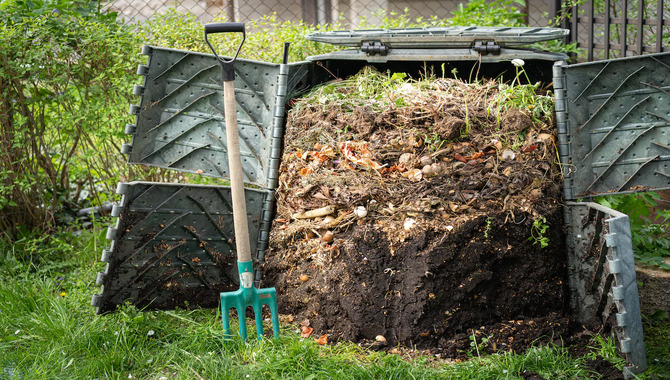
Maintaining and harvesting your compost bin is essential to ensure it continues producing rich, nutrient-dense compost for your garden. Regular maintenance includes turning the compost pile every few weeks to aerate it and speed up decomposition. Adding water to maintain moisture levels and monitoring the temperature to ensure it stays between 120-160°F.
When it comes time to harvest the compost, wait until the material at the bottom of the bin is dark brown and crumbly with no visible food scraps. Then, use a compost screen or sifter to separate any remaining large pieces from the finished compost.
The finished product can be used as a soil amendment or top dressing for plants in your garden. By following these steps, you can ensure that your compost bin remains productive and provides you with high-quality compost for years. So get out there and start creating your own nutrient-rich soil today.
Amazon’s Best-Selling Compost Bins
Composting is an effective way to turn food scraps and yard waste into nutrient-rich soil for your garden. A good compost bin is essential in this process. Fortunately, Amazon has a vast selection of quality options to choose from.
Whether you’re looking for a cedar-walled tumbler or a DIY pallet bin system made of untreated wood slats held together by hardware cloth or chicken wire, there’s something that will suit your space and style. Some bins are suitable for worm composting, while others are meant for large-scale outdoor compost piles with fast decomposition.
With features like side panels that allow airflow and moisture control, you’ll have no trouble creating good compost, even in warm weather conditions. And since making your own organic matter is eco-friendly and helps reduce landfill waste, investing in a compost bin is always a good idea!
Are There Any Additional Tools Or Accessories That Can Help With Composting In A Bin?
Composting in a bin can be an effective and sustainable way to reduce waste and create nutrient-rich soil for plants. While the basics of composting involve adding organic matter, such as food scraps and yard waste, to a bin, several additional tools and accessories can help improve the process.
For example, a compost thermometer can help monitor the compost pile’s temperature, which is important for ensuring it breaks down properly. Aeration tools such as a compost turner or pitchfork can also help mix up the bin’s contents. And improve airflow, speeding up the decomposition process.
Some people add shredded newspaper or coconut coir to their compost bin to improve moisture retention. Overall, while these tools and accessories are not essential for composting in a bin, they can make the process more efficient and effective.
Conclusion
Composting is an easy way to reduce waste and create nutrient-rich soil for your garden. With the wide range of compost bin designs and sizes available, it’s easy to find one that fits your needs, whether you have a small balcony or a large backyard.
With so many compost bin designs and sizes available, choosing the right one for your needs can be overwhelming. However, with some research, you can find the perfect compost bin that fits your lifestyle and space requirements. From mini countertop bins to mega outdoor models, there’s a Compost bin designs and sizes for everyone. When selecting a compost bin, consider material, design, size, and maintenance requirements.
It’s important to consider factors such as your available space, the type of materials you’ll be composting, and your desired level of involvement when selecting a bin. Doing so can create a composting system that meets your needs and helps you reduce waste while improving soil health.
Frequently Asked Questions
[rank_math_rich_snippet id=”s-ffeb788d-8272-4ec5-a96d-c16bcca1370b”]

I am passionate about home engineering. I specialize in designing, installing, and maintaining heating, ventilation, and air conditioning systems. My goal is to help people stay comfortable in their homes all year long.
